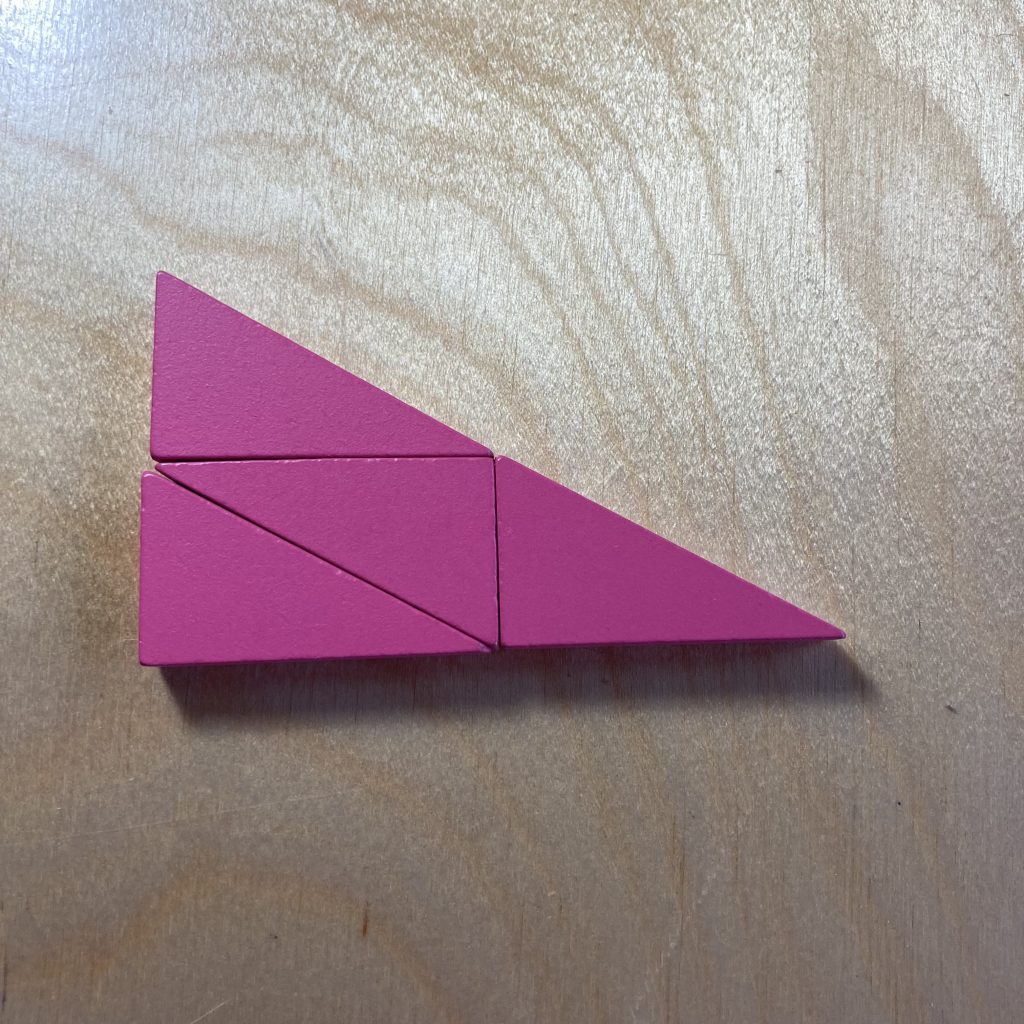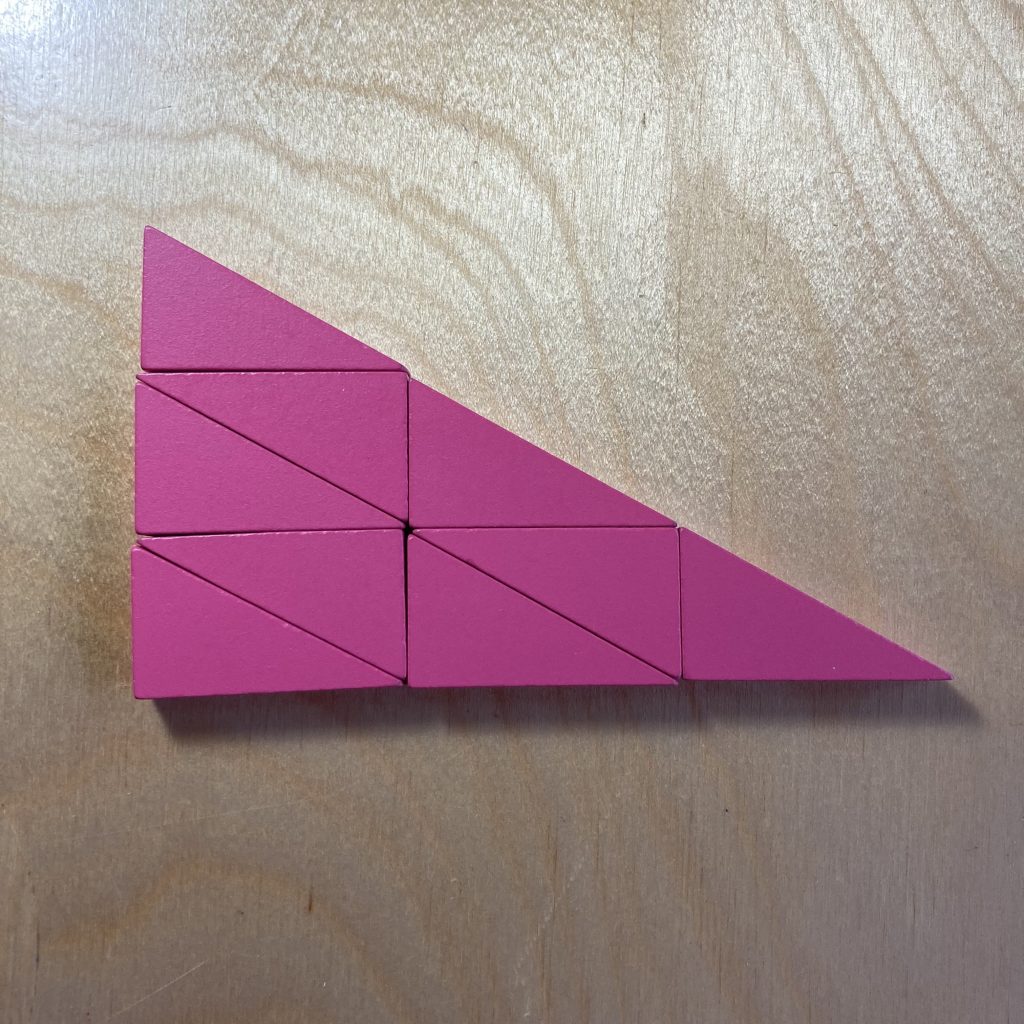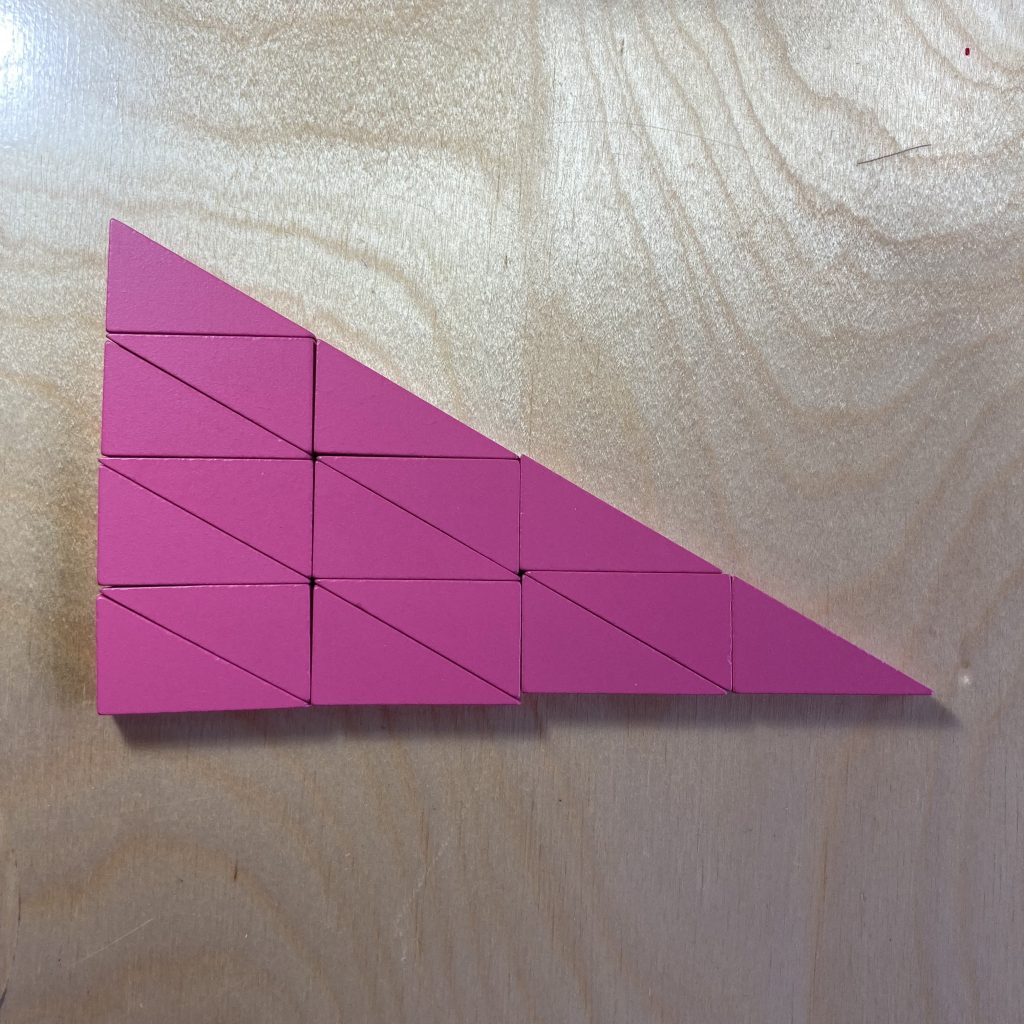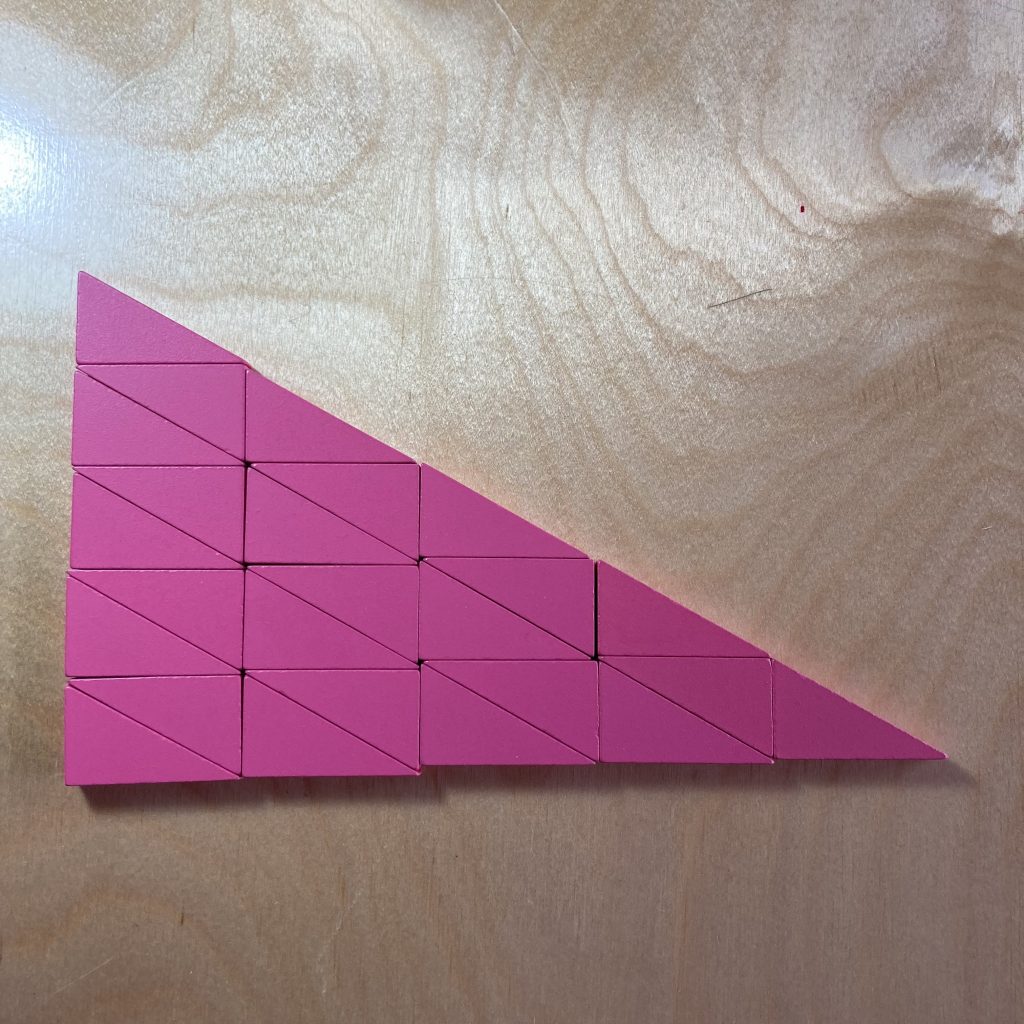I wrote last week about the release of 21st Century Pattern Blocks on a much larger scale than before. This week, I want to share five fun math adventures that begin with these blocks.
1.Scaling
Which 21st Century Pattern Blocks can you use (any number of) themselves to make a larger version of themselves?
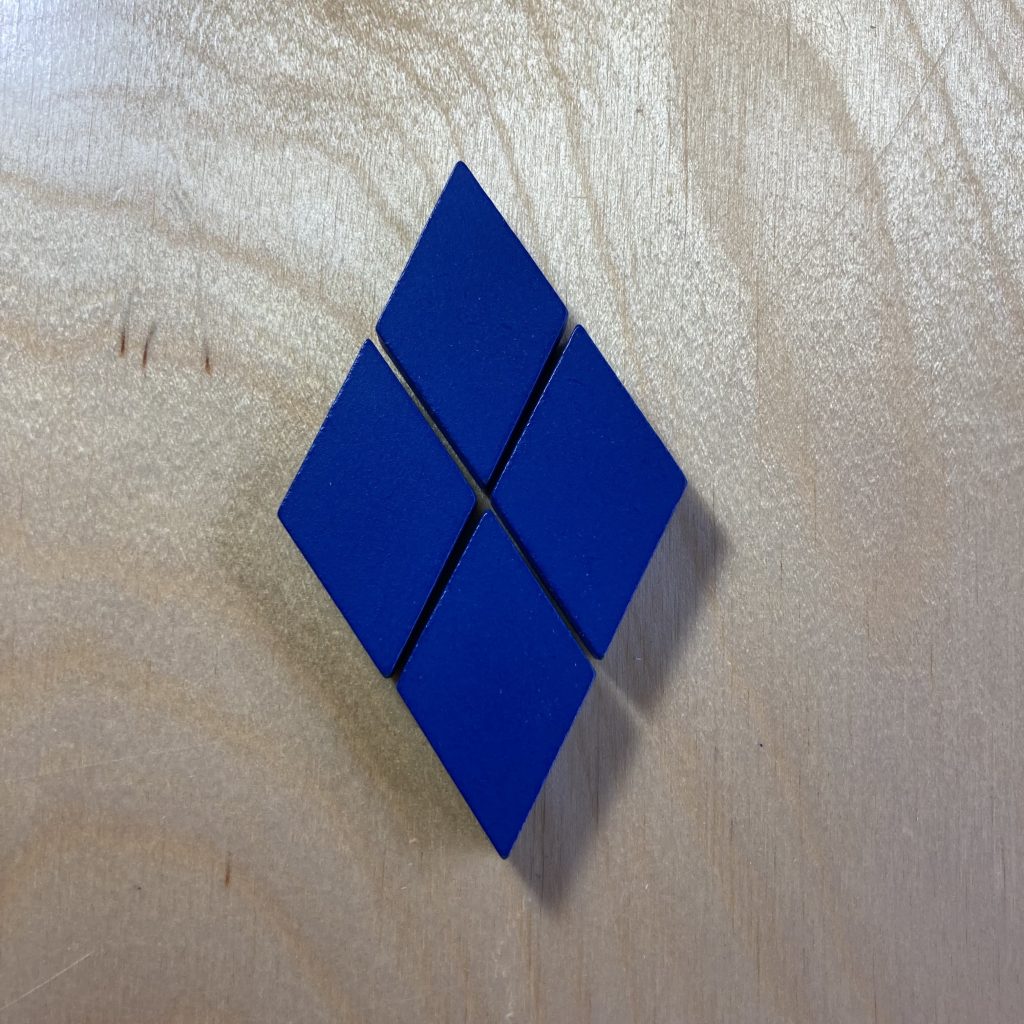
Which blocks can you make larger versions of, using OTHER blocks?
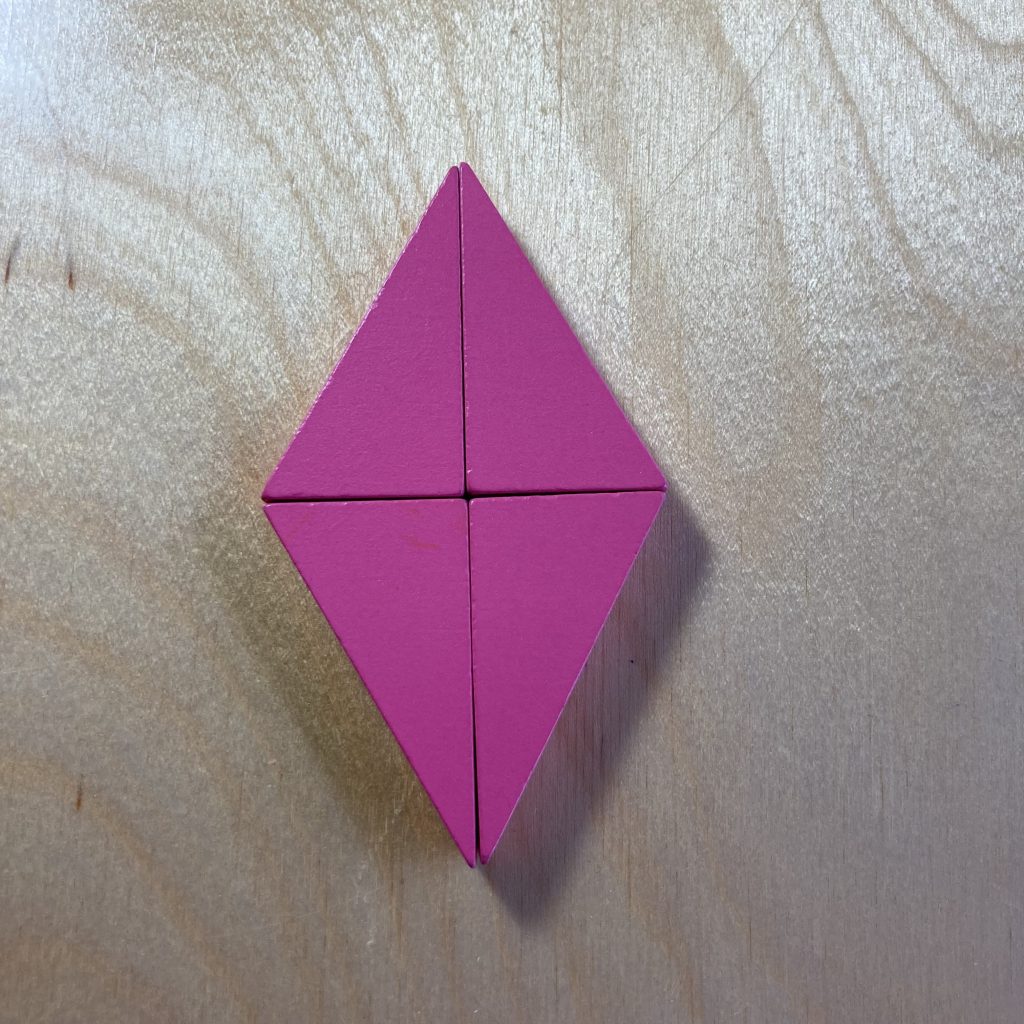
Are there any blocks you can’t make a scaled copy of, using triangles?
2. More Scaling
All triangles have the property that you can make a larger, congruent version of themselves using four of the original size (and also 9, 16, and all the squares).
NOT ALL triangles have the property that you can do this with three. This triangle does.
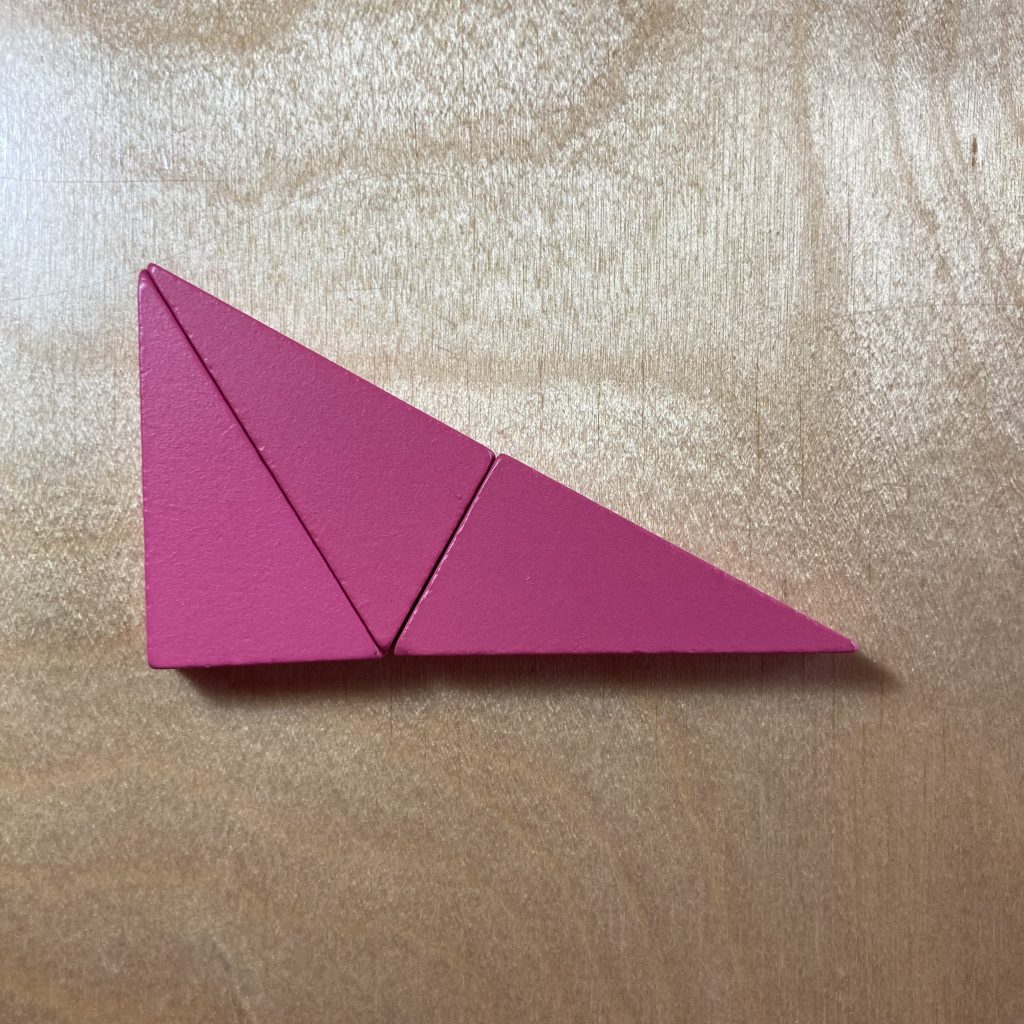
Try it.
What other numbers of triangles can you use to scale this triangle up, besides 3 and the squares? Can you design a new triangle that you can scale up by a factor other than 3 or the squares? What would a triangle look like that can be scaled up with TWO copies of itself? Or FIVE? Are there any numbers for which there is no scaling triangle?
3. Symmetry
The triangle is asymmetric.
You can spin the triangle in the center of this image to match any of the ones that surround it. Let’s call this a clockwise-triangle because the triangles are all pointing around a clockwise circle.
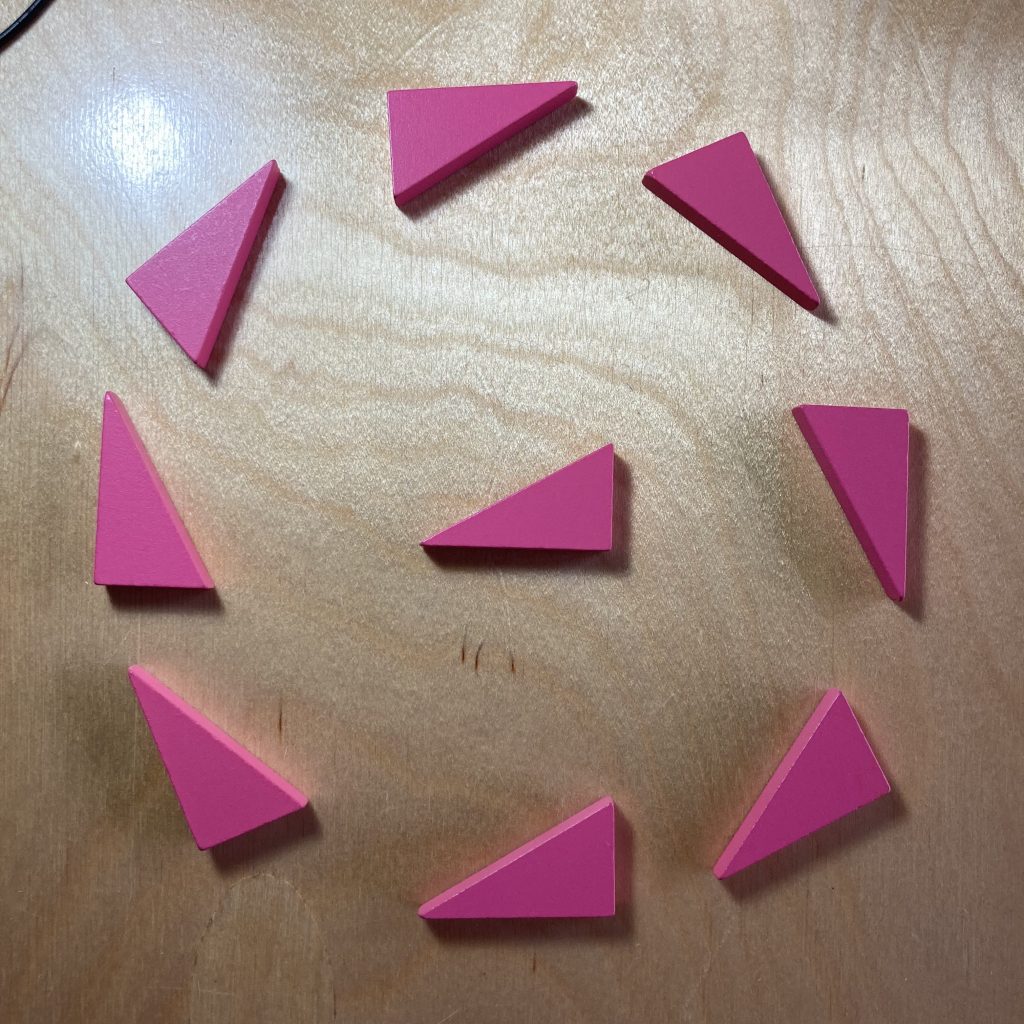
In this second image, you’ll need to flip the triangle in order to match the counter-clockwise facing circles surrounding it.
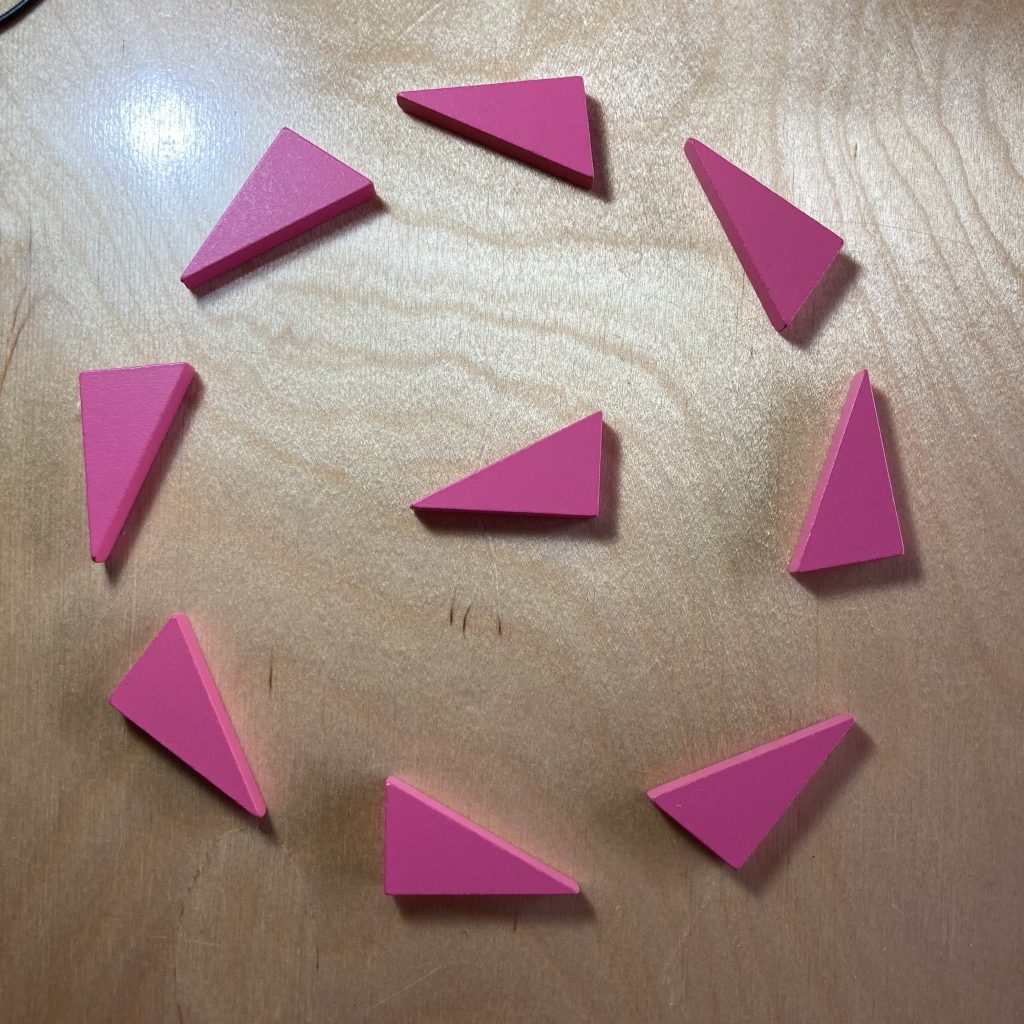
Here’s a fun little game to play with that asymmetry.
Select one triangle and open mirrors to the angle where you see three triangles—the real one and two reflections.
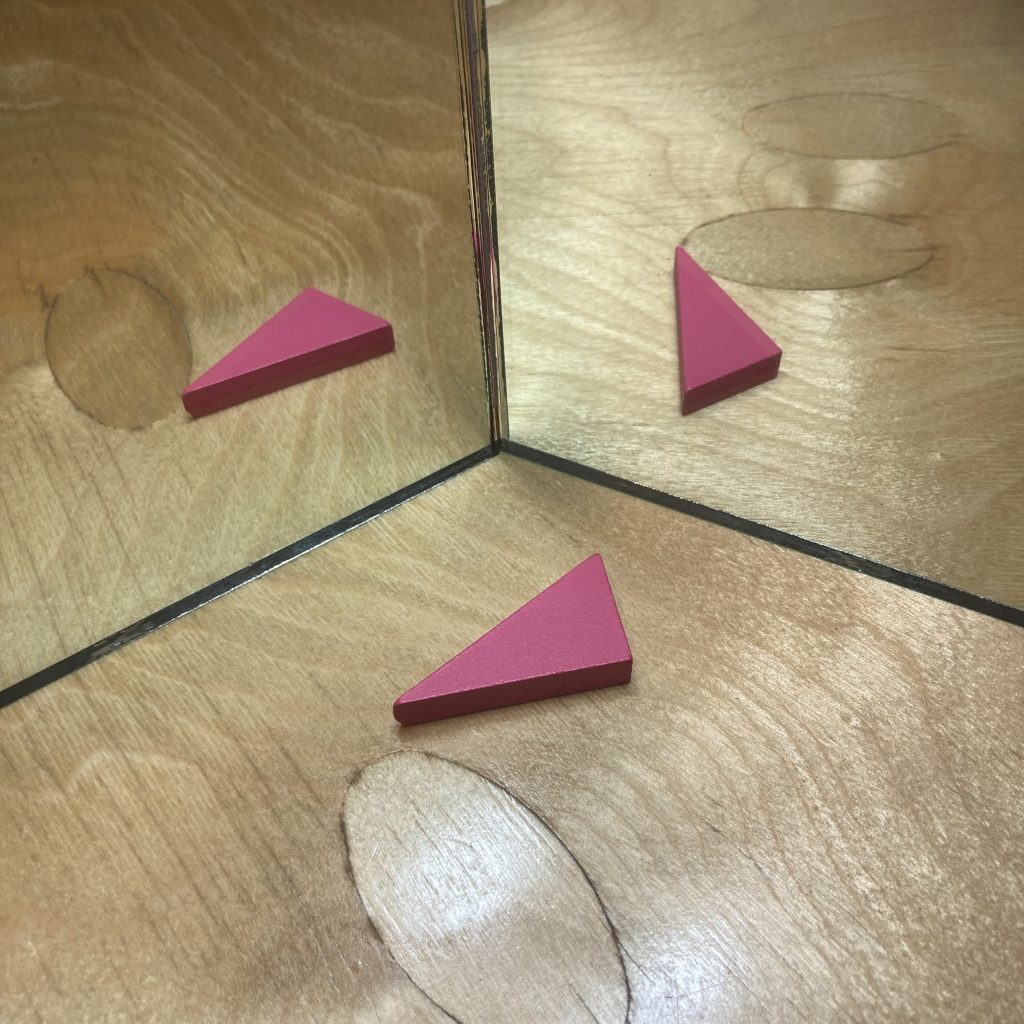
Notice that the other two are opposite handed-ness as your original. In this case, the original is a clockwise triangle. The other two are counterclockwise.
Now close a bit until you see four triangles, and verify that you’ve got two of each. The new one that appears is pointing the same direction around the clock as the original.
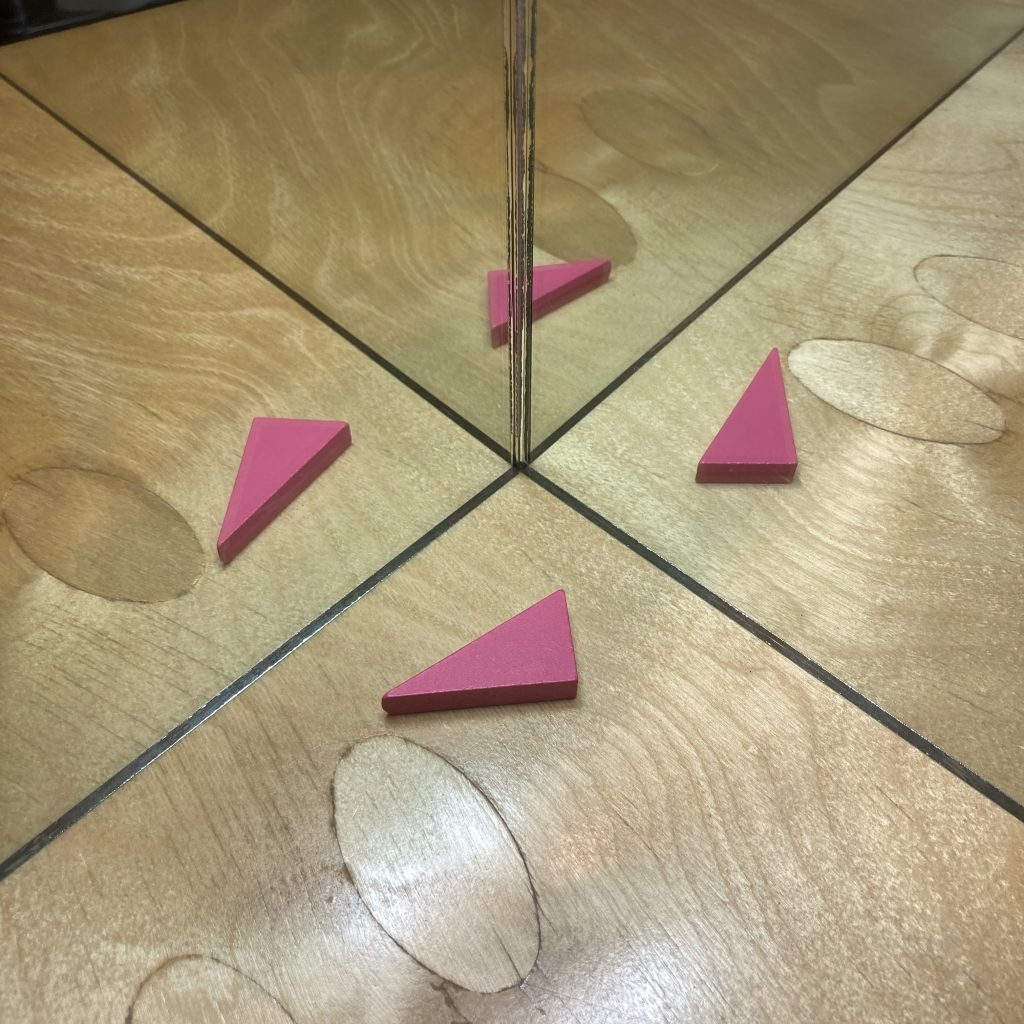
Before going to five, make a prediction. Which direction will it be facing? Continue and conjecture how things will play out as you close the mirrors and make more triangles. If you had 11 triangles (the real one, plus 10 in the mirrors), would you have an extra clockwise or an extra counter-clockwise triangle?
4. Area and Perimeter
Put the blocks in order according to area, from smallest to largest. Then do the same thing by perimeter. What differences do you notice between those orderings? Which blocks were most difficult to measure or order by area? by perimeter?
(No images for this one, because they’d give away the fun!)
5. Compare Side Lengths
If the shortest side of the triangle is one unit, then the longest side is two units. You can verify that by lining the triangles up next to each other. You’ll cover the same length with 2 short sides and one long side. And also 4 short sides and 2 long sides cover the same length.
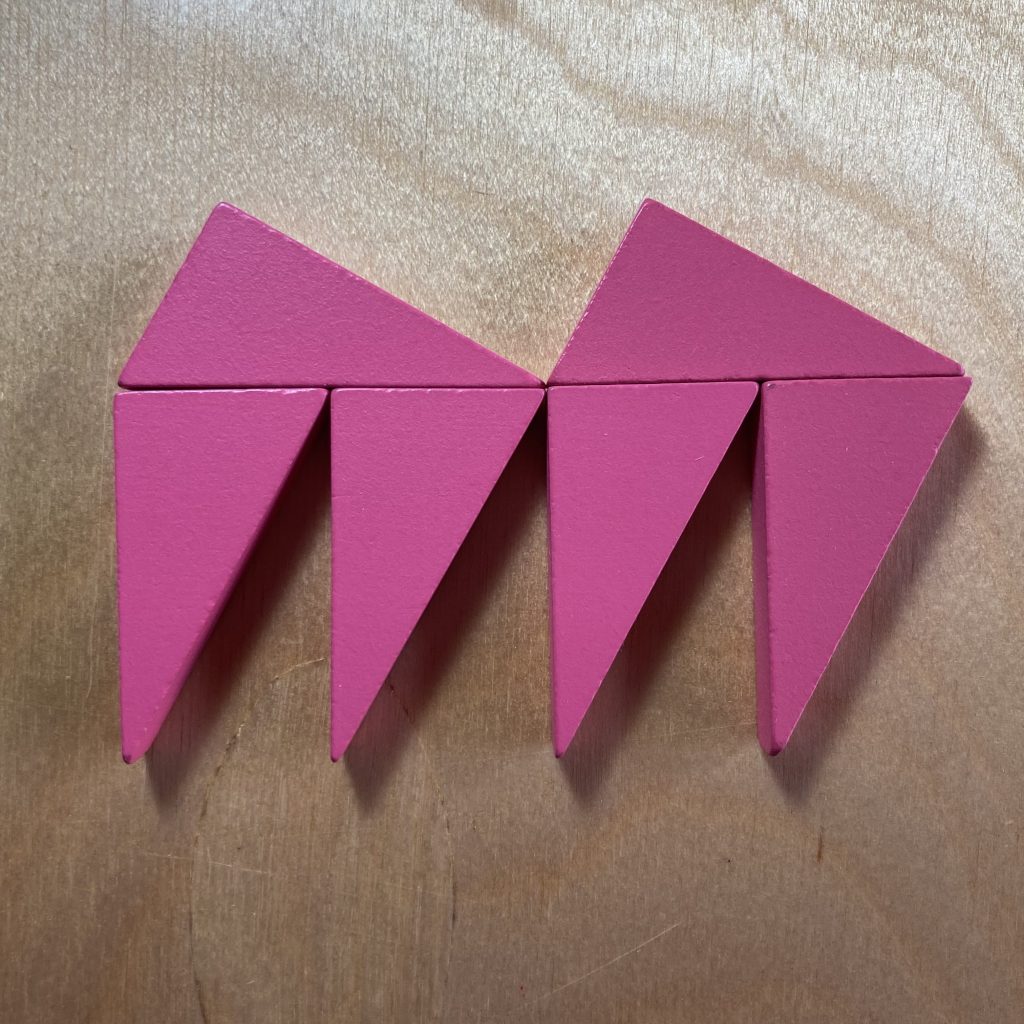
What about the medium side length? How many short (or long) sides can you use to cover the same length as some number of the medium sides?

